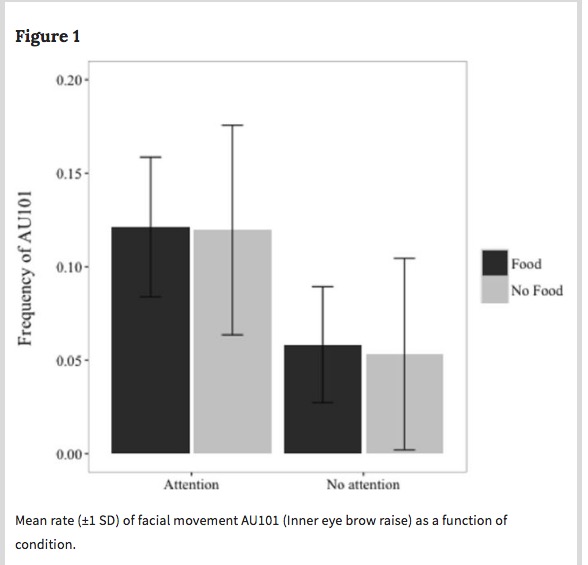
Writing in Scientific Reports, Dr. Juliane Kaminski of the University of Portsmouth, UK and colleagues studied the facial reactions of dogs when a stranger faced them and when the same person faced away from them. In addition, in each position the person also held food in their hands.
The experimental subjects were 24 pet dogs of various breeds that were comfortable with strangers. They ranged in age from 1-12 years, with an average of about 5 years old. After they were allowed to explore the experimental room, they were leashed and exposed to a stranger who either faced towards or away from them for two minutes. Video cameras recorded the animals' facial reactions and any body movements under each condition.
Numerous facial and body movements were recorded and assessed. These included body position changes such sitting or lying down, tail wagging and changes in movement of various facial muscles. For example, contraction of the frontalis muscle, which results in a raising of the inner eyebrow — this makes the eye look bigger and rounder. Other facial actions assessed were the blink and contraction of the zygomaticus muscle which pulls the lip corners towards the ears — a "smiling" action.
The investigators found that the dogs responded more when the stimulus person faced them than when her back was turned (see chart below for example of inner eyebrow lift reactions).

In addition to increasing the frequency of the eyebrow raise, the frequency of vocalizations was significantly greater when the stimulus person faced the dogs, as was the frequency with which they showed their tongues. Interestingly, the presence or absence of food had no effect on the animals' reactions. The investigators theorized that the raised eyebrow movement that made the eyes rounder might appeal to people, since it makes the faces more infantile in appearance — thus it could be construed as an action that has a positive effect on human-dog interactions.
So do these data really mean that dogs like us more than food? Well, to really assess that we'd need to demonstrate these results in hungry dogs. But what they do imply is that human attention can impact dogs' expressions in subtle ways that might well influence humans' attitudes towards the animals.
